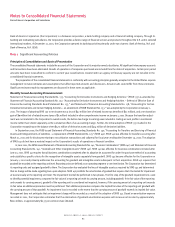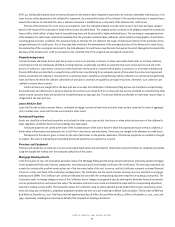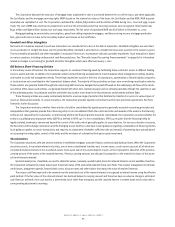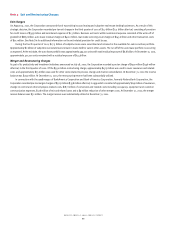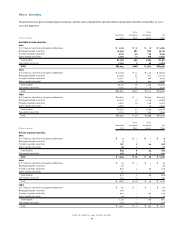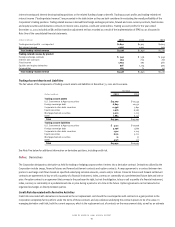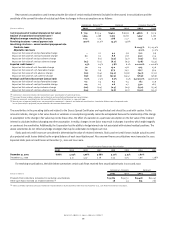Bank of America 2001 Annual Report Download - page 93
Download and view the complete annual report
Please find page 93 of the 2001 Bank of America annual report below. You can navigate through the pages in the report by either clicking on the pages listed below, or by using the keyword search tool below to find specific information within the annual report.
BANK OF AMERICA 2001 ANNUAL REPORT
91
interest-earning and interest-bearing trading positions or the related funding charge or benefit. Trading account profits and trading-related net
interest income (“trading-related revenue”) are presented in the table below as they are both considered in evaluating the overall profitability of the
Corporation’s trading positions. Trading-related revenue is derived from foreign exchange spot rates, forward and cross-currency contracts, fixed income
and equity securities and derivative contracts in interest rates, equities, credit and commodities. Trading account profits for the year ended
December 31, 2001 included an $83 million transition adjustment net loss recorded as a result of the implementation of SFAS 133 as discussed in
Note One of the consolidated financial statements.
(Dollars in millions)
2001 2000 1999
Trading account profits – as reported $1,842 $1,923 $1,605
Net interest income 1,566 1,023 662
Total trading-related revenue $3,408 $2,946 $2,267
Trading-related revenue by product
Foreign exchange contracts $541 $536 $549
Interest rate contracts 753 773 716
Fixed income 1,033 392 460
Equities and equity derivatives 916 1,174 495
Commodities 165 71 47
Total trading-related revenue $3,408 $2,946 $2,267
Trading Account Assets and Liabilities
The fair values of the components of trading account assets and liabilities at December 31, 2001 and 2000 were:
Fair Value
(Dollars in millions)
2001 2000
Trading account assets
U.S. Government & Agency securities $15,009 $10,545
Foreign sovereign debt 6,809 10,432
Corporate & other debt securities 11,596 7,841
Equity securities 2,976 6,363
Mortgage-backed securities 3,070 1,713
Other 7,884 6,147
Total $47,344 $ 43,041
Trading account liabilities
U.S. Government & Agency securities $4,121 $ 10,906
Foreign sovereign debt 3,096 1,860
Corporate & other debt securities 1,501 2,215
Equity securities 6,151 5,712
Mortgage-backed securities 12 37
Other 4,571 217
Total $19,452 $20,947
See Note Five below for additional information on derivative positions, including credit risk.
Note 5 Derivatives
The Corporation designates a derivative as held for trading or hedging purposes when it enters into a derivative contract. Derivatives utilized by the
Corporation include swaps, financial futures and forward settlement contracts and option contracts. A swap agreement is a contract between two
parties to exchange cash flows based on specified underlying notional amounts, assets and/or indices. Financial futures and forward settlement
contracts are agreements to buy or sell a quantity of a financial instrument, index, currency or commodity at a predetermined future date and rate or
price. An option contract is an agreement that conveys to the purchaser the right, but not the obligation, to buy or sell a quantity of a financial instrument,
index, currency or commodity at a predetermined rate or price during a period or at a time in the future. Option agreements can be transacted on
organized exchanges or directly between parties.
Credit Risk Associated with Derivative Activities
Credit risk associated with derivatives is measured as the net replacement cost should the counterparties with contracts in a gain position to the
Corporation completely fail to perform under the terms of those contracts and any collateral underlying the contracts proves to be of no value. In
managing derivative credit risk, both the current exposure, which is the replacement cost of contracts on the measurement date, as well as an estimate



